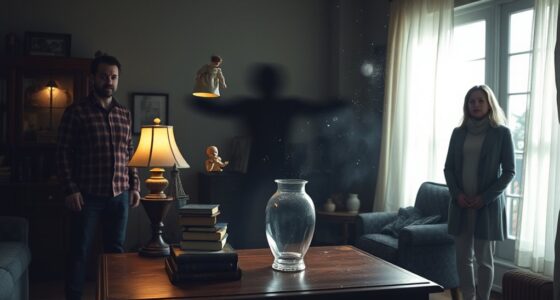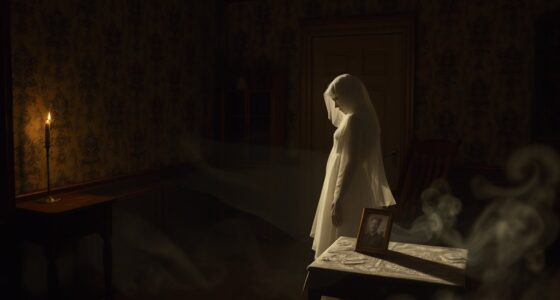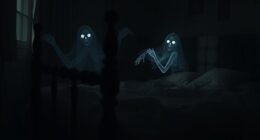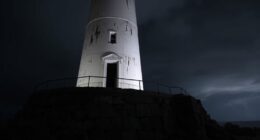On rural roads near historic prison sites, apparent time slips may seem to reveal older dialect features, but these are often influenced by local stories, folklore, and cultural preservation rather than true linguistic persistence. Residents’ recountings of ghostly encounters and storytelling traditions can shape language to sound archaic, creating an illusion of linguistic conservatism. To uncover the real story behind these language patterns, you’ll want to explore how cultural factors reinforce local identity and shape speech over time.
Key Takeaways
- Apparent time slip may result from local folklore and storytelling traditions that preserve archaic language features.
- Paranormal narratives surrounding the prison cellblock can influence residents to adopt older speech patterns.
- Cultural efforts to commemorate history might reinforce archaic language use, mimicking linguistic pasts.
- Distinguishing genuine historical language from modern storytelling is essential to avoid misinterpretation.
- Critical analysis helps separate linguistic relics from cultural artifacts shaped by legends and ghost stories.
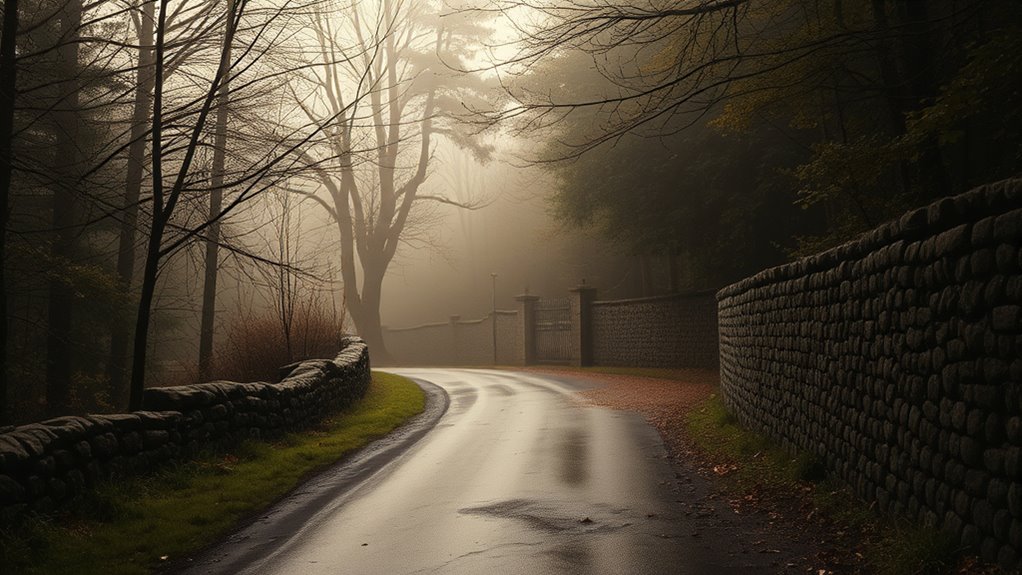
When studying linguistic change over generations, apparent time slip can sometimes lead researchers astray, making it seem like language evolves more rapidly than it actually does. This phenomenon becomes especially tricky when investigating stories tied to paranormal phenomena or historical accuracy. Imagine walking along a quiet country road near an old prison cellblock, where local legends tell of ghostly whispers and unexplained sightings. You might notice that some residents speak in older dialects or use archaic phrases, leading you to believe that linguistic features persist in isolated communities longer than expected. However, these observations could be misleading. The apparent retention of certain language forms might be a product of local storytelling traditions or the community’s desire to preserve its history, not an indication of linguistic stability over generations.
In this context, apparent time slip can skew your understanding of how language changes. If you rely solely on what people say today and assume it reflects the speech of their ancestors, you might overestimate the persistence of old language features. This is especially true in areas with rich histories of paranormal phenomena, where stories are passed down with reverence and often embellishment. These stories can influence how people speak, creating a sense of linguistic authenticity tied to the past. As a result, you may interpret these speech patterns as evidence of historical accuracy, but they could simply be part of the local folklore. The community’s focus on maintaining its identity and legends may preserve certain phrases or expressions, not because they are linguistically old, but because they serve cultural or symbolic purposes.
Moreover, paranormal storytelling often blurs the line between fact and fiction, impacting how language is used in these settings. When locals recount ghostly encounters or strange noises at the prison, they may adopt certain speech patterns to enhance the eerie atmosphere, reinforcing a sense of antiquity or mystery. This can lead you to mistakenly believe that those speech features are relics from the past, rather than modern fabrications rooted in tradition. Consequently, the apparent time slip becomes a reflection of cultural storytelling rather than genuine linguistic conservatism. Recognizing this distinction is essential for maintaining historical accuracy in your analysis. You need to evaluate that linguistic features might be preserved or revived through stories and local legends, rather than through direct linguistic transmission over generations. Additionally, understanding that linguistic change can be influenced by cultural factors helps prevent misinterpretations, ensuring you don’t mistake cultural memory or paranormal narratives for pure linguistic relics, and maintains the integrity of your research.
Frequently Asked Questions
What Specific Location Was the Time Slip Observed?
You observed the time slip on a country road near a historic prison cellblock. The location’s historical context adds to its mysterious vibe, especially given the weather conditions at the time, which included fog and overcast skies. These elements seem to enhance the eerie atmosphere, making the event feel even more surreal. You might wonder if the weather played a role in the strange experience, heightening the sense of stepping back in time.
Were Any Witnesses Able to Verify the Incident Independently?
While some believe paranormal explanations, no witnesses could verify the incident independently. You might find it intriguing that eyewitness credibility remains uncertain, as only a few reported seeing the event, and their accounts vary. Though the story persists, the lack of corroboration leaves room for doubt, making it difficult to determine if what was seen was a genuine anomaly or simply a misinterpretation. Your skepticism is understandable given these circumstances.
What Equipment Was Used to Document the Time Slip?
During the paranormal investigation, you used a combination of reliable equipment to document the time slip, including EMF meters, digital voice recorders, and infrared cameras. You guaranteed equipment reliability by calibrating devices beforehand and monitoring their performance throughout the session. These tools helped capture any anomalous readings or sounds, providing tangible evidence of the incident. Trusting your equipment’s accuracy is vital for validating the paranormal activity you’re investigating.
Has Similar Time Slip Phenomena Been Reported Elsewhere Nearby?
You’ll find that similar time slip phenomena have been reported nearby, often linked to local folklore and historical rumors. Many residents and visitors share stories of experiencing strange sensations or glimpses of the past in the surrounding area, especially near the old prison site. These accounts add to the mystery, suggesting that the location might hold more unexplained events rooted in local legends and historical mystique.
Could Natural Environmental Factors Have Caused the Perception of Time Slip?
Environmental interference and perceptual distortion could indeed cause the perception of a time slip. You might notice how sudden changes in light, weather, or natural sounds can alter your sense of reality. These factors can distort your perception, making moments feel stretched or compressed. While there’s no definitive proof, such natural environmental influences could plausibly contribute to experiencing a perceived time slip during your walk or exploration.
Conclusion
As you stand there, the ghostly echoes of footsteps from a bygone era clash sharply with the quiet silence of today. The historic prison cellblock whispers stories long past, yet your presence feels suspended between worlds. This time slip leaves you hauntingly aware that history isn’t just in books—it’s alive, lurking in the shadows. In that fleeting moment, you realize some places hold memories so vivid, they refuse to be forgotten.



